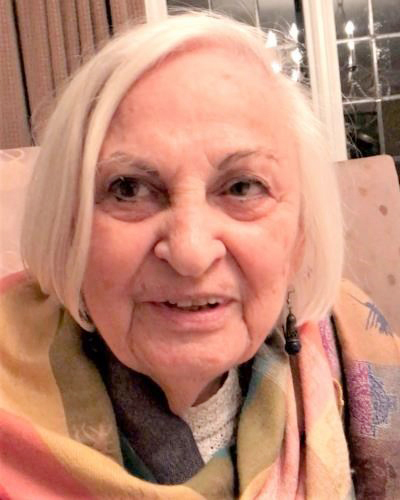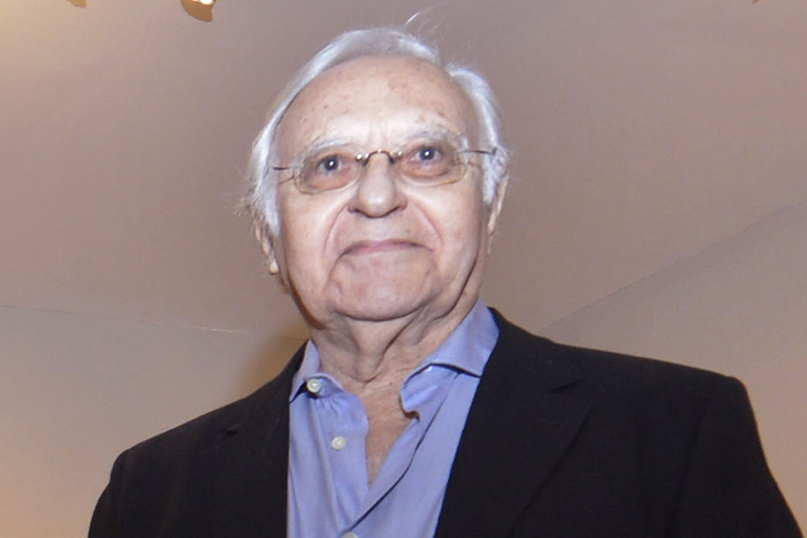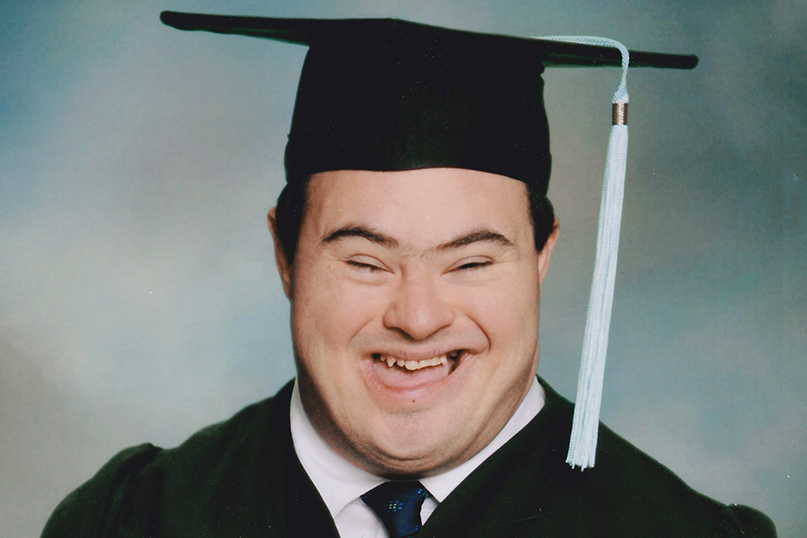
Connecticut native Norma Bursack, 92, was “one tough cookie”

HARTFORD – Norma Bursack faced her bout COVID-19 with characteristic fortitude and aplomb. “Don’t worry,” she told her family, “I’m a tough cookie.”
Those who knew her would agree. Ultimately, though, this was one battle the feisty 92-year-old could not win. Bursack died of COVID-19 on Thursday, May 7.
Born in Manchester, Conn. on Dec. 18, 1927, Bursack was the devoted daughter of the late Daniel and Sophie (Spector) Bursack. Growing up, she was nicknamed “Sissy.” Infused with the pioneer spirit, Bursack moved to the State of Israel in 1949 to help es-tablish the newly-born country. And later returned to the U.S.
A single, working mother she served as executive secretary at the Jewish Federation of Greater Hartford.
Busack took great pride in her daughters and their accomplishments. Known affec-tionately as ‘Yammy’ or ‘Grandma’ by her grandchildren, she showered them with love and attention, never missing a school play or a special event.
A creative spirit, she was a published poet – including several poems that appeared in the pages of the CT Jewish Ledger, –who always marked special occasions with personalized poems.
She is survived by her daughters, Ayelet Salant Chozick and her husband Bruce, and Ronet Salant Noe and her husband David; her grandchildren Rebekah, Daniel, and Joshua Chozick, and Alexandra and Jessica Noe; her sister-in-law Elaine Bursack; and many nieces and nephews.
In addition to her parents, she is predeceased by her sisters, Beatrice Bursack Snyder and Ruth Bursack Sachs, and her brother Jack Bursack.
The coronavirus restrictions kept Norma’s family from being by her side while she fought her final battle. But her nurses Tiana and Stacey, held a phone to her ear so her family could speak with her and let her know she was loved at the end.
Abraham Palatnik, 92, inventor of kinechromatic art

RIO DE JANEIRO (JTA) – Abraham Palatnik, a famed Brazilian Jewish artist who ex-plored the role of movement in art, died May 9 of COVID-19 in Rio. He was 92.
Palatnik was one the pioneers of kinetic art, a branch of fine arts that explores the vis-ual effects of physical movements and optical illusions. His work has been featured at exhibitions at some of the leading museums in the world, including the Museum of Modern Art and the Met Breuer in New York, and the Museum of Fine Arts in Houston.
“He was one of the great artists of the fine arts. His work is recognized in Brazil and worldwide,” said Fernando Lottenberg, president of the Brazilian Israelite Confederation, Brazil’s umbrella Jewish organization.
The son of Jewish immigrants who left Russia in 1919, Palatnik was born in 1928 in Natal, a city in Brazil’s northeastern corner. The Palatniks were the first Jewish family to settle in Natal and were among the founders of a Jewish cultural center and kindergarten there. They had a significant influence on the development of the city and its suburbs, opening furniture factories and porcelain production plants, as well as teaching locals to run their own businesses.
From 1942 to 1945, Palatnik studied at the Montefiori Technical School in Tel Aviv, specializing in explosion engines. He began his art studies at the studio of the painter Haaron Avni and the sculptor Moshe Sternschuss. He later took art classes at the Municipal Art Institute of Tel Aviv. In 1948, he returned to Brazil.
In 2013, the record price for a Palatnik work was reached when his Sequencia Visual S-51 sold at Christie’s New York for $785,000. In Brazil, retrospective exhibitions of Palatnik’s have been held across the country since 1999.
Deborah Nagler, 66, pioneered use of technology in Jewish education

NEW YORK (JTA) – Deborah Kantor Nagler’s life as a Jewish educator began when she was just a teenager. At 19, she took a group of 14- and 15-year-old students from her synagogue in St. Louis, to Israel for the summer. She would go on to earn two master’s degrees in education – one from the Jewish Theological Seminary and another, in educational technology, from Full Sail University – and become a creative force in the field of Jewish education.
“She was a great educator, a bit ahead of her time,” said David Bryfman, CEO of the Jewish Education Project in New York.
Nagler, who died April 3 of COVID-19 at 66, contributed to a 2014 book Bryfman edited on experiential education. Her chapter dealt with virtual reality and Jewish education.
“As an Orthodox woman in her 60s, she wasn’t the first person you would think to turn to on the subject,” Bryfman said. “But she got the technology a lot quicker than many of us did.”
Nagler held a series of leadership positions in Jewish education over the course of her career, at the Bergen County and Metrowest Jewish federations in New Jersey and later at Hadassah, were she was national director of education and training. After the Bernie Madoff scandal took a big toll on the organization, she decided to retrain to focus on educational technology, said her husband, Fred Nagler.
She went on to serve as director of a program in educational technology at Gratz College and as director of a project developing immersive 3D environments for education. She taught online educational technology courses for graduate students at New Jersey City University and at Gratz. And she served as an instructional designer for an online graduate program at Hebrew Union College in New York. Nagler also earned an honorary doctorate from the Jewish Theological Seminary and a Ed.D. in educational technology from New Jersey City University.
When she filled in as a substitute teacher at the Moriah School in Englewood, she taught a unit on engineering using as an example the eruv, a symbolic boundary used by observant Jews to carry objects in public on the Sabbath. The school’s principal told Fred Nagler she was the only teacher who could seamlessly integrate Judaism into STEM classes.
Nagler is survived by two daughters from her first marriage, Shira Marshall and Chana Rackliff; four stepchildren from her second marriage: Sheryl Solomon, Aviva Mermelstein, Yael Zimerman and Yoni Nagler; two brothers, David Kantor and Mark Kantor; 28 grandchildren and two great-grandchildren.
Saadya Ehrenpreis, 35, defied expectations with determination and joy

(JTA) – When Saadya Ehrenpreis was an infant, a doctor told his mother that he would “never walk, talk or amount to anything.” He wound up doing all three.
Ehrenpreis was born with Down syndrome, but he was intensely determined. With the help of his family, he not only learned to walk and talk, but he graduated high school, spent several years studying in yeshiva in Israel, and attended Yeshiva University. Along the way, he charmed everyone around him with his relentlessly upbeat nature.
After he died of COVID-19 on April 28, at the age of 35, his funeral on Zoom was watched by nearly 1,000 people.
“One of things that made him special was his unwavering optimism,” said Avi Ganz, the program director of Ohr Torah Stone’s Yeshivat Darkaynu, a Israel gap year program for young men with special needs, which Ehrenpreis attended. “People were drawn to him because he saw only beauty in other people.”
In Israel, “he just blossomed,” said his sister, Yael Nechama Meyer.
Ehrenpreis subsequently went on to study at Yeshiva University as part of a special program that allowed him to attend specialized classes at the university’s campus in Manhattan. At YU, Ehrenpreis lived in a supervised group apartment and he studied hard.
Even though his was not a degree program, he was to be included in the university’s upcoming graduation ceremony, which was cancelled due to the coronavirus. In the last picture taken with his family, Ehrenpreis is wearing a cap and gown and smiling broadly.
“Everyone has been coming forward to describe this little spark of light that came into their lives,” Meyer said. “One of my friends said that after she watched the funeral, her ambition is to be more like Saadya, to love more and criticize less, to see more of the positive in others and in life.”
“I never saw him get angry,” his mother, Ahava Ehrenpreis, a writer for the Jewish magazine Mishpacha, told JTA. “In terms of human emotional quotient, he was genius level. He was extremely empathetic and intuitive. If he sensed any tension in some-one, he had to fix it.”







 Southern New England Jewish Ledger
Southern New England Jewish Ledger















